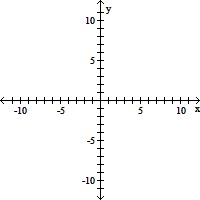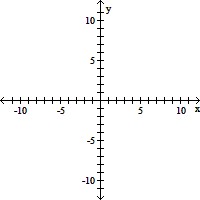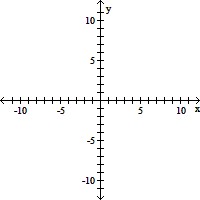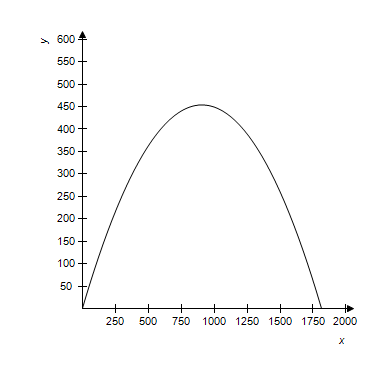A cannonball fired from the origin follows the graph of

Here x denotes the distance downrange, and y denotes the height of the cannonball. Both are measured in feet.
?
A: Make a graph of y versus x. In choosing a viewing window, bear in mind that the cannonball follows the graph only until it strikes the ground.B: How far downrange does the cannonball strike the ground? Round your answer to two decimal places, if necessary.C: How far downrange does the cannonball reach its maximum height? Round your answer to two decimal places, if necessary.D: What is the maximum height the cannonball reaches? Round your answer to two decimal places, if necessary.
What will be an ideal response?
?
?
B: 1815.03 feet downrange
?
C: 907.52 feet downrange
?
D: 453.76 feet
You might also like to view...
Solve the problem.A local television station sends out questionnaires to determine if viewers would rather see a documentary, an interview show, or reruns of a game show. There were 500 responses with the following results:150 were interested in an interview show and a documentary, but not reruns.20 were interested in an interview show and reruns but not a documentary70 were interested in reruns but not an interview show.120 were interested in an interview show but not a documentary.50 were interested in a documentary and reruns.30 were interested in an interview show and reruns.40 were interested in none of the three.How many are interested in exactly one kind of show?
A. 250 B. 230 C. 240 D. 220
Graph the function f by starting with the graph of y = x2 and using transformations (shifting, compressing, stretching, and/or reflection).f(x) = -4x2 - 6
A. 
B. 
C. 
D. 
Decide whether or not the function is a probability density function on the indicated interval.f(x) =  x3; [0, 3]
x3; [0, 3]
A. No B. Yes
Write the percent as a decimal.86.38%
A. 8.638 B. 0.8538 C. 0.8638 D. 0.08638
